2SC945 Bipolar NPN Transistor: Pinout, Equivalents, Datasheet
TRANSISTOR TO-92 MOD
The UTC 2SC945 is an audio frequency amplifier high frequency OSC NPN transistor. The following article will introduce the basic details of the device.

Transistor C945 test
2SC945 Description
The UTC 2SC945 is an audio frequency amplifier high frequency OSC NPN transistor.
2SC945 Pinout

2SC945 CAD Model
Symbol
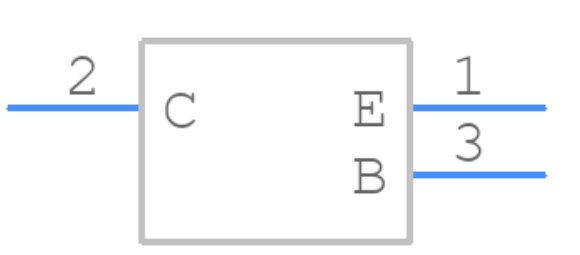
Footprint

3D Model

2SC945 Features
* Collector-Emitter voltage: BVCBO=50V
* Collector current up to 150mA
* High hFE linearity
* Complimentary to UTC 2SA733
2SC945Complimentary
2SA733.
2SC945 Equivalents
| Part Number | Description | Manufacturer |
| 2SC2856TRANSISTORS | Small Signal Bipolar Transistor, 0.1A I(C), NPN, TO-92 | Hitachi Ltd |
| MPSA56/D26Z{OPTION18}TRANSISTORS | 500mA, 80V, PNP, Si, SMALL SIGNAL TRANSISTOR, TO-92 | Texas Instruments |
| KSC2310-OTRANSISTORS | Small Signal Bipolar Transistor, 0.05A I(C), 150V V(BR)CEO, 1-Element, NPN, Silicon, TO-92, TO-92L, 3 PIN | Samsung Semiconductor |
| BC368-16TRANSISTORS | TRANSISTOR 1000 mA, 20 V, NPN, Si, SMALL SIGNAL TRANSISTOR, TO-92, BIP General Purpose Small Signal | NXP Semiconductors |
| BSS38TRANSISTORS | TRANSISTOR 100 mA, 100 V, NPN, Si, SMALL SIGNAL TRANSISTOR, TO-92, BIP General Purpose Small Signal | NXP Semiconductors |
| ZTX455QTRANSISTORS | Small Signal Bipolar Transistor, 1A I(C), 140V V(BR)CEO, 1-Element, NPN, Silicon, PLASTIC, TO-92 COMPATIBLE, E-LINE PACKAGE-3 | Zetex / Diodes Inc |
| JC557ATRANSISTORS | TRANSISTOR 100 mA, 45 V, PNP, Si, SMALL SIGNAL TRANSISTOR, TO-92, BIP General Purpose Small Signal | NXP Semiconductors |
| BC546BRL1TRANSISTORS | NPN Bipolar Transistor, TO-92 (TO-226) 5.33mm Body Height, 2000-REEL | onsemi |
| ZTX450TRANSISTORS | Small Signal Bipolar Transistor, 1A I(C), 45V V(BR)CEO, 1-Element, NPN, Silicon, E-LINE PACKAGE-3 | Diodes Incorporated |
| BC546B-AMMOTRANSISTORS | TRANSISTOR 100 mA, 65 V, NPN, Si, SMALL SIGNAL TRANSISTOR, TO-92, BIP General Purpose Small Signal | NXP Semiconductors |
Specifications
- TypeParameter
- Mounting Type
The "Mounting Type" in electronic components refers to the method used to attach or connect a component to a circuit board or other substrate, such as through-hole, surface-mount, or panel mount.
Through Hole - Package / Case
refers to the protective housing that encases an electronic component, providing mechanical support, electrical connections, and thermal management.
TO-226-3, TO-92-3 (TO-226AA) (Formed Leads) - Surface Mount
having leads that are designed to be soldered on the side of a circuit board that the body of the component is mounted on.
NO - Transistor Element Material
The "Transistor Element Material" parameter in electronic components refers to the material used to construct the transistor within the component. Transistors are semiconductor devices that amplify or switch electronic signals and are a fundamental building block in electronic circuits. The material used for the transistor element can significantly impact the performance and characteristics of the component. Common materials used for transistor elements include silicon, germanium, and gallium arsenide, each with its own unique properties and suitability for different applications. The choice of transistor element material is crucial in designing electronic components to meet specific performance requirements such as speed, power efficiency, and temperature tolerance.
SILICON - Current-Collector (Ic) (Max)150mA
- Number of Elements1
- Operating Temperature
The operating temperature is the range of ambient temperature within which a power supply, or any other electrical equipment, operate in. This ranges from a minimum operating temperature, to a peak or maximum operating temperature, outside which, the power supply may fail.
-55°C~150°C TJ - Packaging
Semiconductor package is a carrier / shell used to contain and cover one or more semiconductor components or integrated circuits. The material of the shell can be metal, plastic, glass or ceramic.
Tape & Box (TB) - JESD-609 Code
The "JESD-609 Code" in electronic components refers to a standardized marking code that indicates the lead-free solder composition and finish of electronic components for compliance with environmental regulations.
e3 - Pbfree Code
The "Pbfree Code" parameter in electronic components refers to the code or marking used to indicate that the component is lead-free. Lead (Pb) is a toxic substance that has been widely used in electronic components for many years, but due to environmental concerns, there has been a shift towards lead-free alternatives. The Pbfree Code helps manufacturers and users easily identify components that do not contain lead, ensuring compliance with regulations and promoting environmentally friendly practices. It is important to pay attention to the Pbfree Code when selecting electronic components to ensure they meet the necessary requirements for lead-free applications.
yes - Part Status
Parts can have many statuses as they progress through the configuration, analysis, review, and approval stages.
Obsolete - Moisture Sensitivity Level (MSL)
Moisture Sensitivity Level (MSL) is a standardized rating that indicates the susceptibility of electronic components, particularly semiconductors, to moisture-induced damage during storage and the soldering process, defining the allowable exposure time to ambient conditions before they require special handling or baking to prevent failures
1 (Unlimited) - Number of Terminations3
- ECCN Code
An ECCN (Export Control Classification Number) is an alphanumeric code used by the U.S. Bureau of Industry and Security to identify and categorize electronic components and other dual-use items that may require an export license based on their technical characteristics and potential for military use.
EAR99 - Terminal Finish
Terminal Finish refers to the surface treatment applied to the terminals or leads of electronic components to enhance their performance and longevity. It can improve solderability, corrosion resistance, and overall reliability of the connection in electronic assemblies. Common finishes include nickel, gold, and tin, each possessing distinct properties suitable for various applications. The choice of terminal finish can significantly impact the durability and effectiveness of electronic devices.
Matte Tin (Sn) - Terminal Position
In electronic components, the term "Terminal Position" refers to the physical location of the connection points on the component where external electrical connections can be made. These connection points, known as terminals, are typically used to attach wires, leads, or other components to the main body of the electronic component. The terminal position is important for ensuring proper connectivity and functionality of the component within a circuit. It is often specified in technical datasheets or component specifications to help designers and engineers understand how to properly integrate the component into their circuit designs.
BOTTOM - Terminal Form
Occurring at or forming the end of a series, succession, or the like; closing; concluding.
WIRE - Peak Reflow Temperature (Cel)
Peak Reflow Temperature (Cel) is a parameter that specifies the maximum temperature at which an electronic component can be exposed during the reflow soldering process. Reflow soldering is a common method used to attach electronic components to a circuit board. The Peak Reflow Temperature is crucial because it ensures that the component is not damaged or degraded during the soldering process. Exceeding the specified Peak Reflow Temperature can lead to issues such as component failure, reduced performance, or even permanent damage to the component. It is important for manufacturers and assemblers to adhere to the recommended Peak Reflow Temperature to ensure the reliability and functionality of the electronic components.
NOT SPECIFIED - Reach Compliance Code
Reach Compliance Code refers to a designation indicating that electronic components meet the requirements set by the Registration, Evaluation, Authorization, and Restriction of Chemicals (REACH) regulation in the European Union. It signifies that the manufacturer has assessed and managed the chemical substances within the components to ensure safety and environmental protection. This code is vital for compliance with regulations aimed at minimizing risks associated with hazardous substances in electronic products.
compliant - Time@Peak Reflow Temperature-Max (s)
Time@Peak Reflow Temperature-Max (s) refers to the maximum duration that an electronic component can be exposed to the peak reflow temperature during the soldering process, which is crucial for ensuring reliable solder joint formation without damaging the component.
NOT SPECIFIED - Pin Count
a count of all of the component leads (or pins)
3 - JESD-30 Code
JESD-30 Code refers to a standardized descriptive designation system established by JEDEC for semiconductor-device packages. This system provides a systematic method for generating designators that convey essential information about the package's physical characteristics, such as size and shape, which aids in component identification and selection. By using JESD-30 codes, manufacturers and engineers can ensure consistency and clarity in the specification of semiconductor packages across various applications and industries.
O-PBCY-W3 - Qualification Status
An indicator of formal certification of qualifications.
Not Qualified - Configuration
The parameter "Configuration" in electronic components refers to the specific arrangement or setup of the components within a circuit or system. It encompasses how individual elements are interconnected and their physical layout. Configuration can affect the functionality, performance, and efficiency of the electronic system, and may influence factors such as signal flow, impedance, and power distribution. Understanding the configuration is essential for design, troubleshooting, and optimizing electronic devices.
SINGLE - Power - Max
Power - Max is a parameter that specifies the maximum amount of power that an electronic component can handle without being damaged. It is typically measured in watts and indicates the upper limit of power that can be safely supplied to the component. Exceeding the maximum power rating can lead to overheating, malfunction, or permanent damage to the component. It is important to consider the power-max rating when designing circuits or systems to ensure proper operation and longevity of the electronic components.
400mW - Polarity/Channel Type
In electronic components, the parameter "Polarity/Channel Type" refers to the characteristic that determines the direction of current flow or the type of signal that can be accommodated by the component. For components like diodes and transistors, polarity indicates the direction in which current can flow through the component, such as forward bias or reverse bias for diodes. For components like MOSFETs or JFETs, the channel type refers to whether the component is an N-channel or P-channel device, which determines the type of charge carriers that carry current through the component. Understanding the polarity or channel type of a component is crucial for proper circuit design and ensuring that the component is connected correctly to achieve the desired functionality.
NPN - Transistor Type
Transistor type refers to the classification of transistors based on their operation and construction. The two primary types are bipolar junction transistors (BJTs) and field-effect transistors (FETs). BJTs use current to control the flow of current, while FETs utilize voltage to control current flow. Each type has its own subtypes, such as NPN and PNP for BJTs, and MOSFETs and JFETs for FETs, impacting their applications and characteristics in electronic circuits.
NPN - DC Current Gain (hFE) (Min) @ Ic, Vce
The parameter "DC Current Gain (hFE) (Min) @ Ic, Vce" in electronic components refers to the minimum value of the DC current gain, denoted as hFE, under specific operating conditions of collector current (Ic) and collector-emitter voltage (Vce). The DC current gain hFE represents the ratio of the collector current to the base current in a bipolar junction transistor (BJT), indicating the amplification capability of the transistor. The minimum hFE value at a given Ic and Vce helps determine the transistor's performance and efficiency in amplifying signals within a circuit. Designers use this parameter to ensure proper transistor selection and performance in various electronic applications.
120 @ 1mA 6V - Current - Collector Cutoff (Max)
The parameter "Current - Collector Cutoff (Max)" refers to the maximum current at which a transistor or other electronic component will cease to conduct current between the collector and emitter terminals. This parameter is important in determining the maximum current that can flow through the component when it is in the cutoff state. Exceeding this maximum cutoff current can lead to malfunction or damage of the component. It is typically specified in the component's datasheet and is crucial for proper circuit design and operation.
100nA - Vce Saturation (Max) @ Ib, Ic
The parameter "Vce Saturation (Max) @ Ib, Ic" in electronic components refers to the maximum voltage drop across the collector-emitter junction when the transistor is in saturation mode. This parameter is specified at a certain base current (Ib) and collector current (Ic) levels. It indicates the minimum voltage required to keep the transistor fully conducting in saturation mode, ensuring that the transistor operates efficiently and does not enter the cutoff region. Designers use this parameter to ensure proper transistor operation and to prevent overheating or damage to the component.
300mV @ 10mA, 100mA - Voltage - Collector Emitter Breakdown (Max)
Voltage - Collector Emitter Breakdown (Max) is a parameter that specifies the maximum voltage that can be applied between the collector and emitter terminals of a transistor or other semiconductor device before it breaks down and allows excessive current to flow. This parameter is crucial for ensuring the safe and reliable operation of the component within its specified limits. Exceeding the maximum breakdown voltage can lead to permanent damage or failure of the device. Designers and engineers must carefully consider this parameter when selecting components for their circuits to prevent potential issues and ensure proper functionality.
50V - Transition Frequency
Transition Frequency in electronic components refers to the frequency at which a device can transition from one state to another, typically defining the upper limit of its operating frequency. It is a critical parameter in determining the speed and performance of active components like transistors and integrated circuits. This frequency is influenced by factors such as capacitance, resistance, and the inherent characteristics of the materials used in the component's construction. Understanding transition frequency is essential for optimizing circuit designs and ensuring reliable signal processing in various applications.
150MHz - Frequency - Transition
The parameter "Frequency - Transition" in electronic components refers to the maximum frequency at which a signal transition can occur within the component. It is a crucial specification for digital circuits as it determines the speed at which data can be processed and transmitted. A higher frequency transition allows for faster operation and better performance of the electronic component. It is typically measured in hertz (Hz) or megahertz (MHz) and is specified by the manufacturer to ensure proper functioning of the component within a given frequency range.
150MHz - RoHS Status
RoHS means “Restriction of Certain Hazardous Substances” in the “Hazardous Substances Directive” in electrical and electronic equipment.
RoHS Compliant
2SC945 Applications
1.Low current switches
2.Pre-amplifiers
3.H-bridge circuits for low power motors
4.Audio frequency amplifier circuits
5.Oscillator circuits
2SC945 Package

2SC945 Manufacturer
Micro Commercial Co has vast experience in the manufacturing and delivery of high-quality products, as well as a global marketing and sales network spanning the Americas, EMEA, and APAC.
The company's headquarters are in Simi Valley, California, with an engineering and technical support office in Suzhou, China, warehouse and logistics offices in California, Suzhou, and Taipei, as well as the major front and backend manufacturing facilities in Yangzhou, China.
Trend Analysis
Parts with Similar Specs
Datasheet PDF
- Datasheets :
What is 2SC945?
The UTC 2SC945 is an audio frequency amplifier high frequency OSC NPN transistor.
What is the recommended operating temperature of the component?
-55°C~150°C TJ.
What is the package of the device?
TO-226-3, TO-92-3 (TO-226AA) (Formed Leads).
What is the component’s number of pins?
3.
 2SC2229 BJT NPN Transistor: Datasheet pdf, Pinout and 2SC2229 Equivalents
2SC2229 BJT NPN Transistor: Datasheet pdf, Pinout and 2SC2229 Equivalents24 December 20214315
 73S1215F System-on-Chip: Technical Specifications and Applications
73S1215F System-on-Chip: Technical Specifications and Applications29 February 2024138
 Exploring the Microchip PIC24F08KL301ESO Microcontroller: A Holistic Analysis
Exploring the Microchip PIC24F08KL301ESO Microcontroller: A Holistic Analysis29 February 2024105
 74HC244 Driver IC: Pinout, Alterntaive and Price
74HC244 Driver IC: Pinout, Alterntaive and Price30 August 20212906
 A Comprehensive Guide to the 5962-8770203RX Digital to Analog Converter (DAC)
A Comprehensive Guide to the 5962-8770203RX Digital to Analog Converter (DAC)06 March 202496
![Where & How to Use CA3240 Dual Op Amp? [FAQ]](https://res.utmel.com/Images/Article/a6a678b4-a01e-4ebb-b36c-ccdc7c268ed2.png) Where & How to Use CA3240 Dual Op Amp? [FAQ]
Where & How to Use CA3240 Dual Op Amp? [FAQ]04 May 20222739
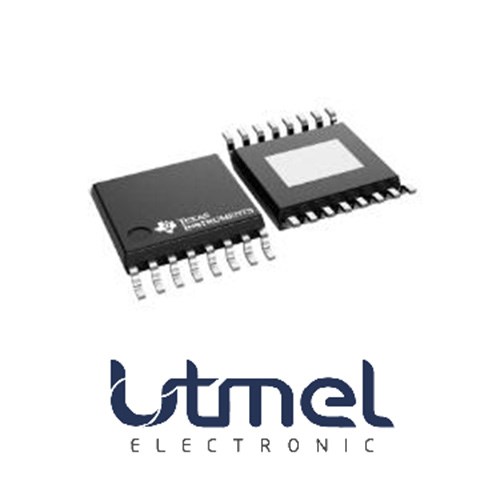 TPS92630QPWPRQ1 LED Driver: Pinout, Manufacturer, and Datasheet
TPS92630QPWPRQ1 LED Driver: Pinout, Manufacturer, and Datasheet23 March 2022259
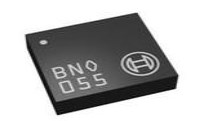 BNO055 Orientation Sensor: Datasheet, Pinout and Features
BNO055 Orientation Sensor: Datasheet, Pinout and Features23 July 20216985
 All About Video Connectors and Their Uses in Today’s Technology
All About Video Connectors and Their Uses in Today’s Technology02 July 2025945
 What is 232\485\422 Communication? Common problems of Serial Communication
What is 232\485\422 Communication? Common problems of Serial Communication29 April 20221667
 What is an Accelerometer Sensor?
What is an Accelerometer Sensor?20 April 202111652
 FPGA vs. Microcontroller Technology: Similarities and Differences
FPGA vs. Microcontroller Technology: Similarities and Differences13 March 20243830
 Structure, Types and Working of Dry Cell
Structure, Types and Working of Dry Cell04 March 202110870
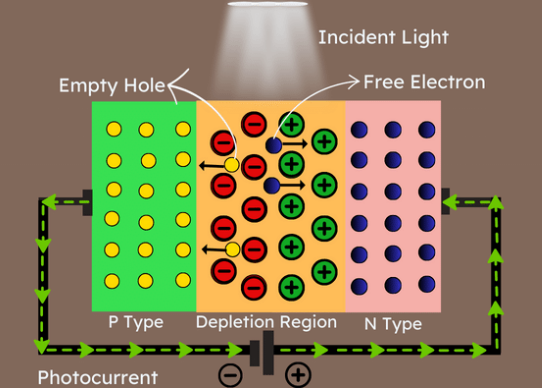 Understanding Photodiodes: Working Principles and Applications - Part 2
Understanding Photodiodes: Working Principles and Applications - Part 224 May 20243540
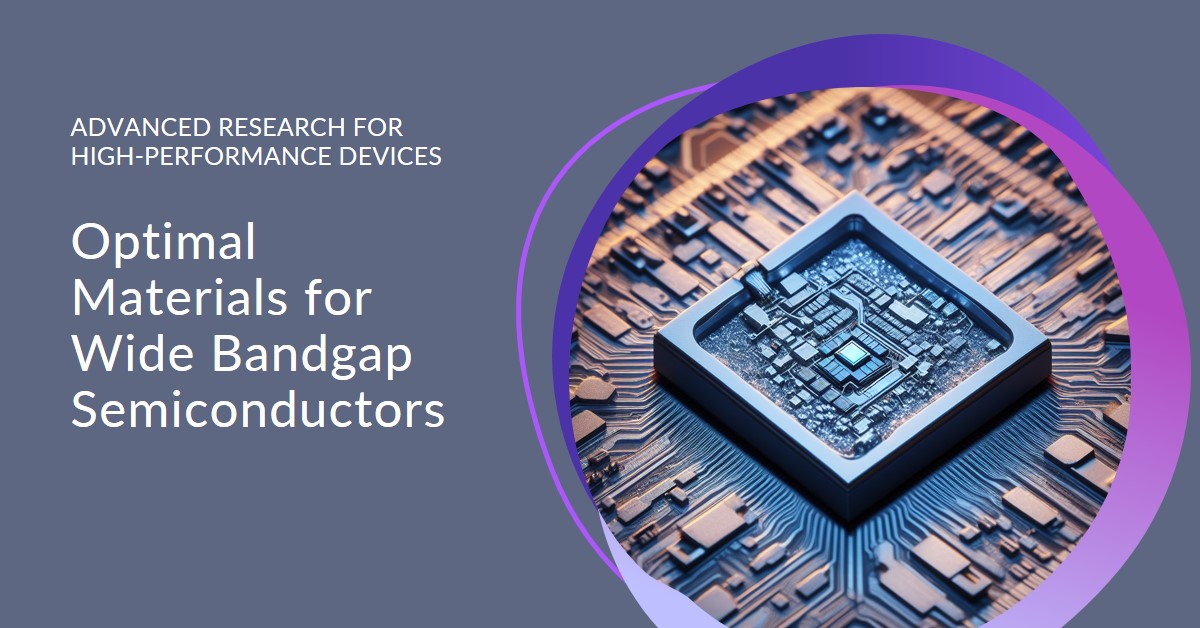 Discovering Optimal Materials for Wide Bandgap Semiconductors
Discovering Optimal Materials for Wide Bandgap Semiconductors20 January 20242020
 Exploring the Advancements in Storage Technologies and Grid Architecture of Electric Vehicle Charging Systems
Exploring the Advancements in Storage Technologies and Grid Architecture of Electric Vehicle Charging Systems18 October 20232057
Micro Commercial Co
In Stock
United States
China
Canada
Japan
Russia
Germany
United Kingdom
Singapore
Italy
Hong Kong(China)
Taiwan(China)
France
Korea
Mexico
Netherlands
Malaysia
Austria
Spain
Switzerland
Poland
Thailand
Vietnam
India
United Arab Emirates
Afghanistan
Åland Islands
Albania
Algeria
American Samoa
Andorra
Angola
Anguilla
Antigua & Barbuda
Argentina
Armenia
Aruba
Australia
Azerbaijan
Bahamas
Bahrain
Bangladesh
Barbados
Belarus
Belgium
Belize
Benin
Bermuda
Bhutan
Bolivia
Bonaire, Sint Eustatius and Saba
Bosnia & Herzegovina
Botswana
Brazil
British Indian Ocean Territory
British Virgin Islands
Brunei
Bulgaria
Burkina Faso
Burundi
Cabo Verde
Cambodia
Cameroon
Cayman Islands
Central African Republic
Chad
Chile
Christmas Island
Cocos (Keeling) Islands
Colombia
Comoros
Congo
Congo (DRC)
Cook Islands
Costa Rica
Côte d’Ivoire
Croatia
Cuba
Curaçao
Cyprus
Czechia
Denmark
Djibouti
Dominica
Dominican Republic
Ecuador
Egypt
El Salvador
Equatorial Guinea
Eritrea
Estonia
Eswatini
Ethiopia
Falkland Islands
Faroe Islands
Fiji
Finland
French Guiana
French Polynesia
Gabon
Gambia
Georgia
Ghana
Gibraltar
Greece
Greenland
Grenada
Guadeloupe
Guam
Guatemala
Guernsey
Guinea
Guinea-Bissau
Guyana
Haiti
Honduras
Hungary
Iceland
Indonesia
Iran
Iraq
Ireland
Isle of Man
Israel
Jamaica
Jersey
Jordan
Kazakhstan
Kenya
Kiribati
Kosovo
Kuwait
Kyrgyzstan
Laos
Latvia
Lebanon
Lesotho
Liberia
Libya
Liechtenstein
Lithuania
Luxembourg
Macao(China)
Madagascar
Malawi
Maldives
Mali
Malta
Marshall Islands
Martinique
Mauritania
Mauritius
Mayotte
Micronesia
Moldova
Monaco
Mongolia
Montenegro
Montserrat
Morocco
Mozambique
Myanmar
Namibia
Nauru
Nepal
New Caledonia
New Zealand
Nicaragua
Niger
Nigeria
Niue
Norfolk Island
North Korea
North Macedonia
Northern Mariana Islands
Norway
Oman
Pakistan
Palau
Palestinian Authority
Panama
Papua New Guinea
Paraguay
Peru
Philippines
Pitcairn Islands
Portugal
Puerto Rico
Qatar
Réunion
Romania
Rwanda
Samoa
San Marino
São Tomé & Príncipe
Saudi Arabia
Senegal
Serbia
Seychelles
Sierra Leone
Sint Maarten
Slovakia
Slovenia
Solomon Islands
Somalia
South Africa
South Sudan
Sri Lanka
St Helena, Ascension, Tristan da Cunha
St. Barthélemy
St. Kitts & Nevis
St. Lucia
St. Martin
St. Pierre & Miquelon
St. Vincent & Grenadines
Sudan
Suriname
Svalbard & Jan Mayen
Sweden
Syria
Tajikistan
Tanzania
Timor-Leste
Togo
Tokelau
Tonga
Trinidad & Tobago
Tunisia
Turkey
Turkmenistan
Turks & Caicos Islands
Tuvalu
U.S. Outlying Islands
U.S. Virgin Islands
Uganda
Ukraine
Uruguay
Uzbekistan
Vanuatu
Vatican City
Venezuela
Wallis & Futuna
Yemen
Zambia
Zimbabwe













